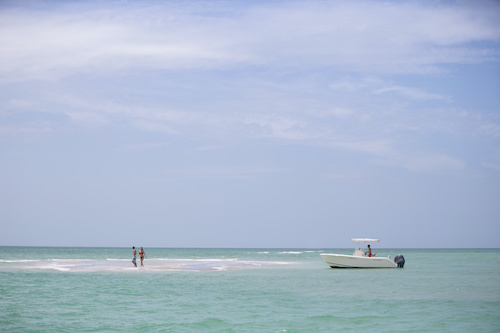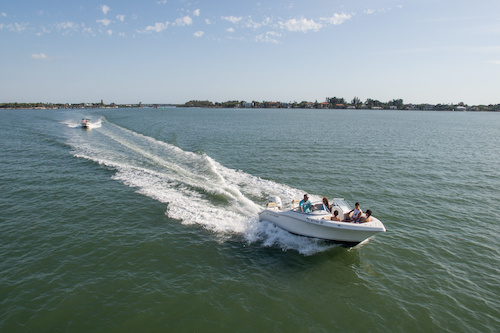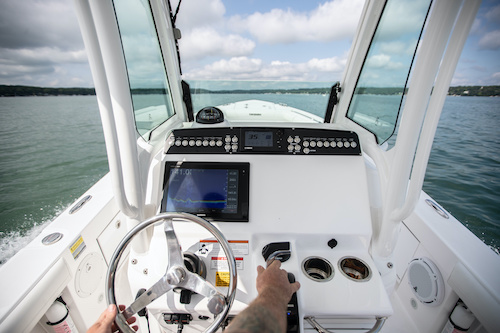Although running aground is always a risk on the water, it can be avoided by being cautious and avoiding other rookie boating blunders. So, how do you keep from grounding your ship? Keeping a sharp eye out is the first and most important step in maintaining situational awareness.
- Best Hot Chocolate In Houston, Texas, Top 10 Best Hot Chocolate In Houston, Tx
- The Best Class In Runescape: Definitive Guide For You
- Kingdom Hearts Best Gummi Ship ? Best Possible Gummi Ship
- Best Boss To Farm Relics For? :: Borderlands 2 Best Relics What Is The Best Relic
- Best Class in Unison League 2021: Best Class Unison League Guide For Beginners, Unison League Classes

Despite your vigilance, there is always the possibility of hitting the bottom; however, there are some simple precautions you can take to lessen the likelihood of this happening.
Bạn đang xem: What Is The Best Way To Avoid Running Aground, How To Avoid Running Aground
5 Factors to Help You Avoid Running Aground
You should be aware of the following to keep your boat from:
The clarity of sight both on and below the surface Locations in close proximity to other boats Where channels and their identifiers can be found Knowing where any shoals or other obstacles are in the area where you intend to boat is essential. How far you can stop in your own boat and how agile it is
Precautions to Take When Boating in Deep Water
Maintaining a Proper Lookout

Keeping a sharp eye out is essential while steering a boat for several reasons, the most important of which is avoiding collisions with objects or the bottom.
Some shoals and shallow weedbeds may be visible as color changes in waters that are relatively clear. Even if you can’t see a change in color on some bodies of water, you may be able to detect it in the way the waves are breaking. There are lots of places where the waves make it impossible to tell whether or not there’s a shoal or not, and in others, visibility of shoals varies from day to day.
Yesterday’s crystal clear water might become muddy and agitated the next day. The use of your eyes is probably the most effective method for avoiding grounding, but it is not sufficient on its own.
Xem thêm : Shop Newburyport ::: Best Of British Newburyport, Massachusetts, 01950
Observing the paths of other vessels is another good way to learn where you can go without risking a collision with the shore. If you see a boat that isn’t the same size as yours in a given area, don’t assume that you can follow suit because of the boat’s draft. Nonetheless, if you’re on a small bowrider and you see a large cruising sailboat, for instance, you can be fairly confident that the path they’ve traveled is safe for you to go down, too.
Simply put, what does “Boat Draft” mean?
How to Avoid Running Aground Using Charts & Chartplotters
Before setting out on a boat trip, it’s a good idea to familiarize yourself with the locations of channels and channel markers, shoals, and other underwater obstacles using a chart or chartplotter. Paper or electronic, learning to use nautical charts is fundamental. These nautical charts are not only useful for navigation, but also for getting acquainted with the “lay of the land” before setting sail (especially in an unfamiliar waterway).

Maintain an Up-to-Date Database
Remember, though, that even if the charts say you can’t run aground, there’s always a chance you will. This is due to the fact that bottom contours and sand bars are always changing. This is especially true in areas with sandy or muddy bottoms after intense storms. That’s why you need to keep your charts current and update your chartplotter’s digital charts regularly.
Obtain a Marine App for Navigation
A marine navigation app can be very useful, as its database will likely include up-to-date charts. It is possible to see where other boaters have found mistakes in the charts thanks to crowdsourced data layers displayed by some models.
Be Conscious of the Tides
Xem thêm : Best Shields Dark Souls 3 : The 15 Best Shields In The Game, Ranked
When boating in a tidal area, it’s important to remember that the tides also need to be taken into account. Mean low water (MLW) depths are what you’ll typically find on a nautical chart. For a given area, this is roughly equivalent to an average of the depth at low tide. Since tides fluctuate from week to week and month to month, an average must be used. Don’t forget that weather patterns and gusty winds can have a major impact on the ebb and flow of the tides.
When you consider all of these factors, you can see why staying in deep water as indicated by the charts or your chartplotter is no real guarantee that you won’t run aground. Instead, it’s just another tool in your arsenal against grounding, along with the others we’ve discussed.
How to Navigate a Boat Through the Waters: Marine Navigation
Stopping Your Boat to Avoid Running Aground
The ability to stop or turn your boat away when you realize that running aground is probable is crucial to avoiding this hazard, regardless of how aware you are of your surroundings or how well you are acquainted with the waterway on which you are traveling.
In this regard, it is crucial that you know your boat inside and out:
Learn how far you have to travel to come to a complete stop at various speeds and how quickly you can possibly make a turn. When you are close to land and you think you might run aground, it is best to slow down. Slashing your speed in half will not only shorten your stopping distance, but will also lessen the damage to your boat or propulsion system if you do hit the bottom.
The following can be viewed as a Xem thêm:Best Starting Country, Long War (Mod) in Xcom’s Long War.
One last thing to keep in mind is that eventually, every boater will hit the sand. Most of us find exploring new areas by boat to be a thrilling and entertaining part of our boating experiences. If you decide to go exploring, just remember to take it slow, prepare thoroughly, keep an eye on the chartplotter, and maintain constant vigilance. If you follow these steps, you won’t have to worry about hitting the ground. Indeed, it will all be a thrilling part of the experience of being out on the water.
Nguồn: https://directmarketingcenter.net
Danh mục: Best









